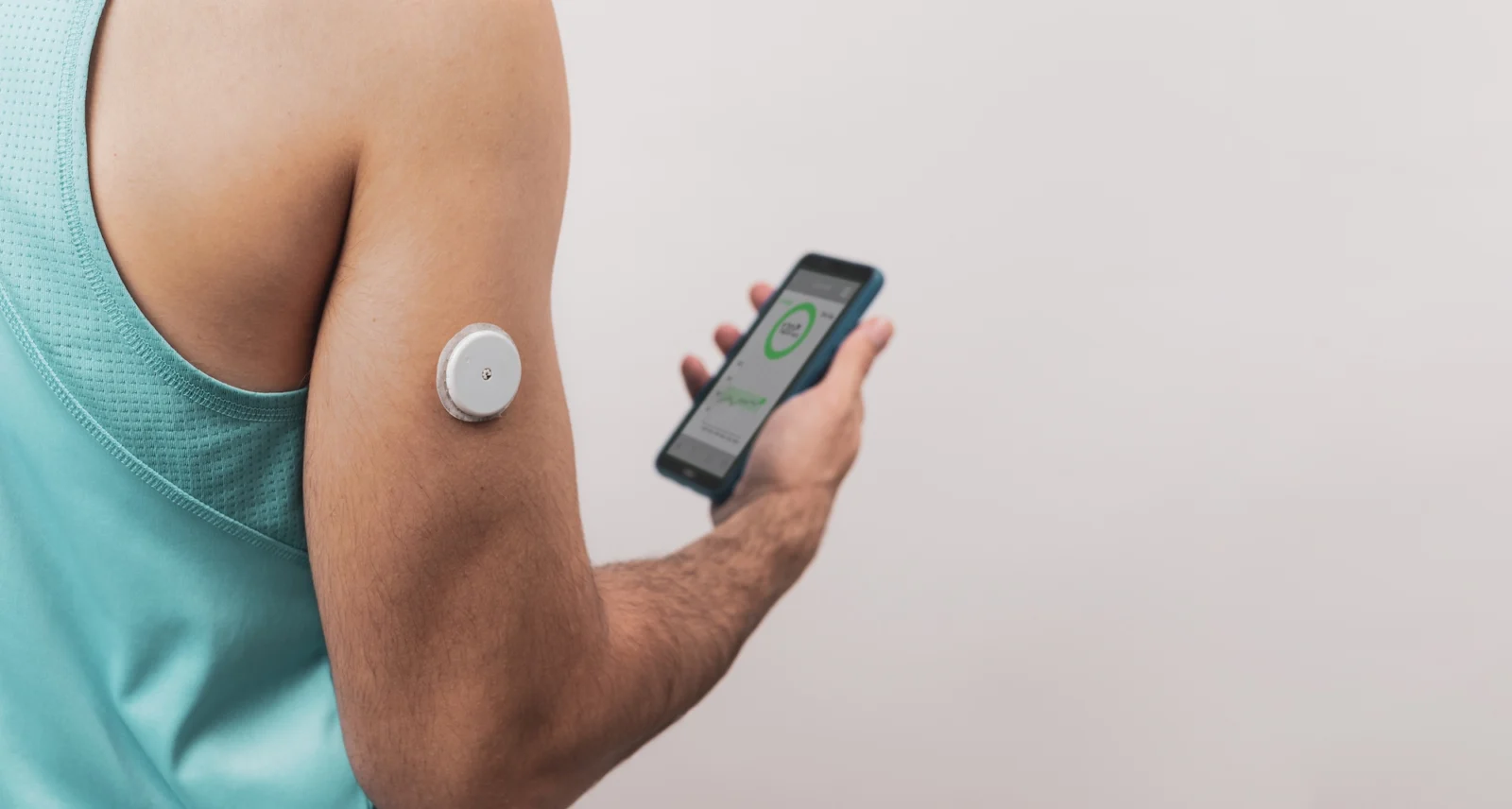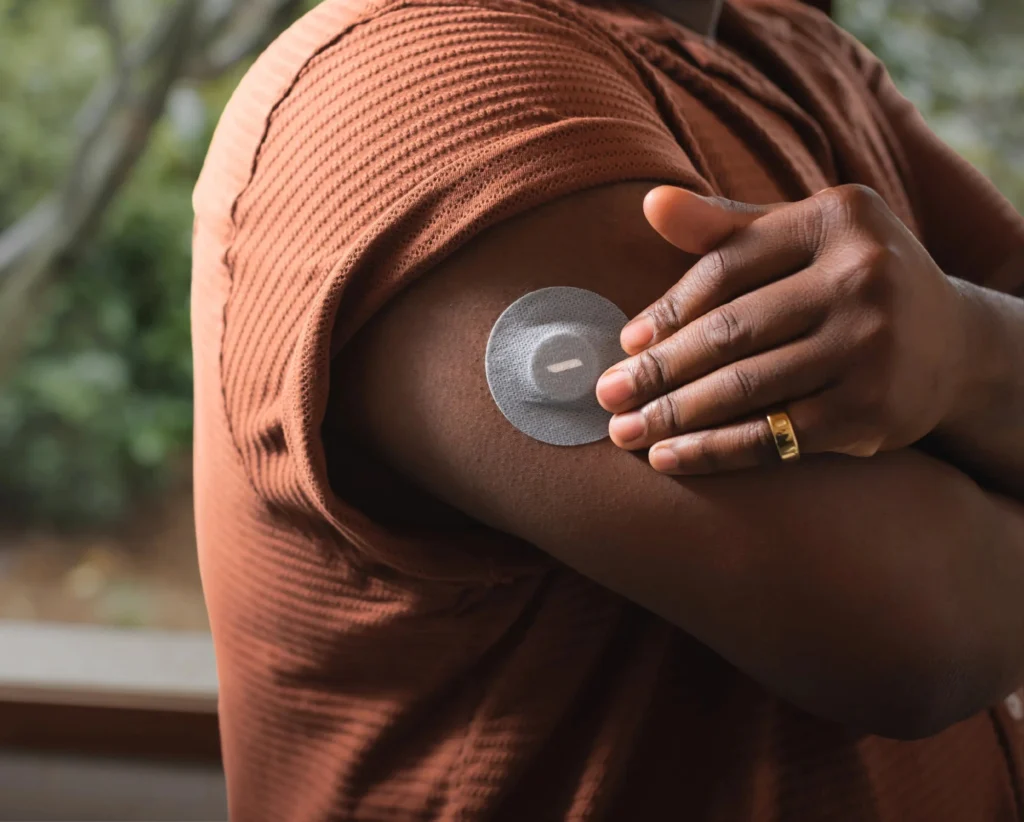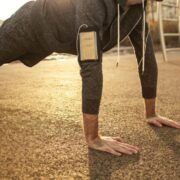Continuous Glucose Monitors Emerge as Next-Gen Wearable

The stage has been set for CGMs and metabolic health apps to potentially replace fitness trackers as the leading wearable
The U.S. Food and Drug Administration has cleared the Dexcom Stelo Glucose Biosensor System, the first over-the-counter continuous glucose monitor (CGM), as awareness of metabolic health continues to gain steam.
The system will become available to purchase online without a prescription this summer.
The wearable Stelo Glucose Biosensor System is designed for those 18 years and older who don’t use insulin and either treat diabetes with oral medications or don’t have a diabetes diagnosis but are interested in seeing firsthand how diet and exercise impact their blood sugar levels.
Using a small sensor worn on the back of the upper arm, Stelo continuously measures, records, analyzes and displays glucose values every 15 minutes when connected to an app. Users can wear each sensor for up to 15 days before replacement.
Stelo isn’t designed for those with “problematic hypoglycemia” since it won’t provide the necessary alerts.
Although Dexcom notes that Stelo users shouldn’t take medical action based on the device’s findings without consulting with a healthcare professional, the health tech company says the glucose biosensor system can help users understand how modifications such as diet and exercise can impact glucose excursion.
Considering that approximately one in three American adults have prediabetes — a staggering 80% of whom don’t know they have it — Stelo can serve as an invaluable tool, underscored by its ease of accessibility. It’s a stance that appears to be shared by the FDA.
“CGMs can be a powerful tool to help monitor blood glucose,” said Jeff Shuren, M.D., J.D., director of the FDA’s Center for Devices and Radiological Health. “Today’s clearance expands access to these devices by allowing individuals to purchase a CGM without the involvement of a healthcare provider.
“Giving more individuals valuable information about their health, regardless of their access to a doctor or health insurance, is an important step forward in advancing health equity for U.S. patients,” Shuren continued.
While a price hasn’t been mentioned yet, one William Blair analyst estimates Stelo may cost around $90 a month and that consumers could use their healthcare savings accounts to offset the expense.
Consumers Embrace Wearables for Health
By all accounts, consumers are entering a new era of health and wellness. The pandemic may have inspired health and wellness, but it also led to skyrocketing sales of pulse oximeters, perhaps a testament to how much consumers have come to rely on monitoring devices beyond fitness and activity trackers.
Instead of simple trackers, companies such as Whoop bill their technology as ‘human performance,’ leaning into AI and providing biometric data points across sleep, recovery, stress and strain.
Smart ring maker Oura is also invested in the glucose realm, having partnered with CGM platforms Veri, Supersapiens and January AI to offer insights into sleep and glucose biomarkers.
One wearable tech startup, Signos, raised $20 million last year as it looks to disrupt the medicated weight loss and metabolic space by using Dexcom CGMs to provide real-time diet and workout recommendations based on the readings with its app.

The CGM Market Heats Up
Although Stelo may be the first CGM cleared for over-the-counter purchase, the CGM space is expected to become increasingly competitive. Abbott’s first consumer biowearable, Lingo, is currently being rolled out across the U.K. with ambitions of receiving a green light for the U.S. market. Similar to Stelo, it tracks glucose levels and provides personalized insights in response.
“Our mood, weight, energy levels and ability to focus are all connected to our individual glucose levels, which rise and fall in response to the food we eat, hours of sleep, regular exercise, and even life’s daily stresses,” said Lily Soutter, a nutritionist in Abbott’s Lingo division. “Improving your metabolic health by tracking your glucose levels over a meaningful period of time can motivate you to implement changes to better manage those spikes and dips, ultimately benefiting your health and well-being.”
Meanwhile, companies like Roche are forging a new frontier in diabetes management and the CGM space using predictive AI for its Accu-Chek SmartGuide device. Using a CGM sensor, Roche’s system displays current glucose levels, predictions for the following two hours and provides a risk prediction for nocturnal hypoglycemia.



